
Step Back in Time: A Guide to Bukchon Hanok Village in Seoul
How to Visit Bukchon Hanok Village: Seoul’s Most Beautiful Traditional Neighbourhood. Hidden Alleys, Photo Spots & Cultural Tips.
Why Bukchon Hanok Village (Korean: 북촌한옥마을) Belongs on Your Seoul Itinerary
Tucked between two of Seoul’s grandest palaces lies a pocket of the city where time seems to stand still. Bukchon Hanok Village (북촌한옥마을) is a living museum of traditional Korean architecture, with sloping tiled roofs, winding stone alleys, and the gentle hush of everyday life unfolding behind wooden doors. This isn’t a theme park — it’s a real neighbourhood (and people still live here) lovingly preserved for over 600 years, where old meets new in the most charming way.
Whether you’re a culture lover, photography enthusiast, or quite simple just seeking a bit of an escape from Seoul’s fast-paced streets, Bukchon Hanok Village is one of the most rewarding places to visit in the city. It’s also one of the most Instagrammable — think hanbok-clad visitors, secret alleyways, and tea houses that look like something out of a Korean drama.
In this guide, you’ll find everything you need to plan your visit — from the best photo spots and hanbok rentals to where to eat, shop, and stay near Bukchon. Plus, tips for travelling responsibly in this residential area and how to make the most of your experience.

1. What is Bukchon Hanok Village?
Bukchon Hanok Village (북촌한옥마을) is one of the most beautiful and culturally rich neighbourhoods in Seoul — and unlike anywhere else in the city. The name “Bukchon” literally means “North Village,” referencing its location north of two major palaces: Gyeongbokgung and Changdeokgung. But it’s the word “hanok” that holds the real magic. A hanok is a traditional Korean house built with natural materials like wood, stone, and clay, designed with thoughtful harmony between structure and nature.
What makes Bukchon so special is that it’s not a reconstructed heritage site — it’s an actual, functioning part of the city where people live and work. Many of the hanoks date back to the Joseon Dynasty, and the area has been carefully preserved to maintain its historical charm. At the same time, it’s also home to a growing number of artisan workshops, cafés, cultural centers, and guesthouses that breathe fresh life into the old walls.
Walking through Bukchon is like flipping through the pages of Korea’s past — yet it’s effortlessly woven into modern-day Seoul. That balance between tradition and trend is part of what makes this village so enchanting.
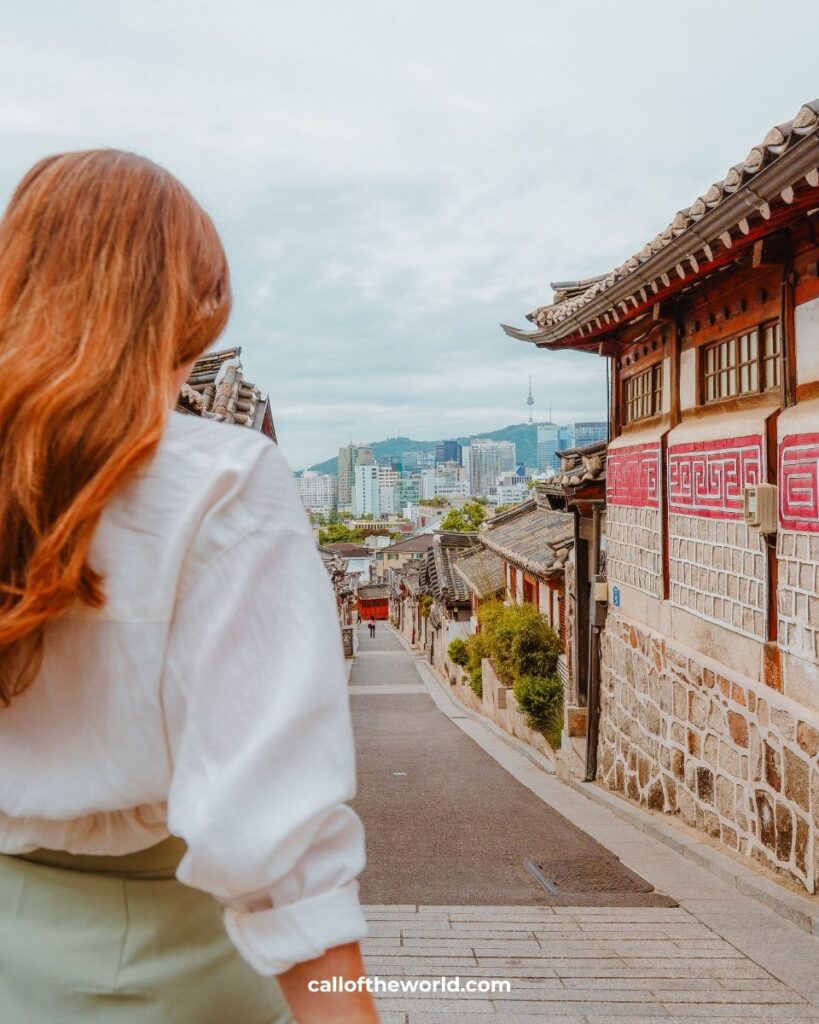
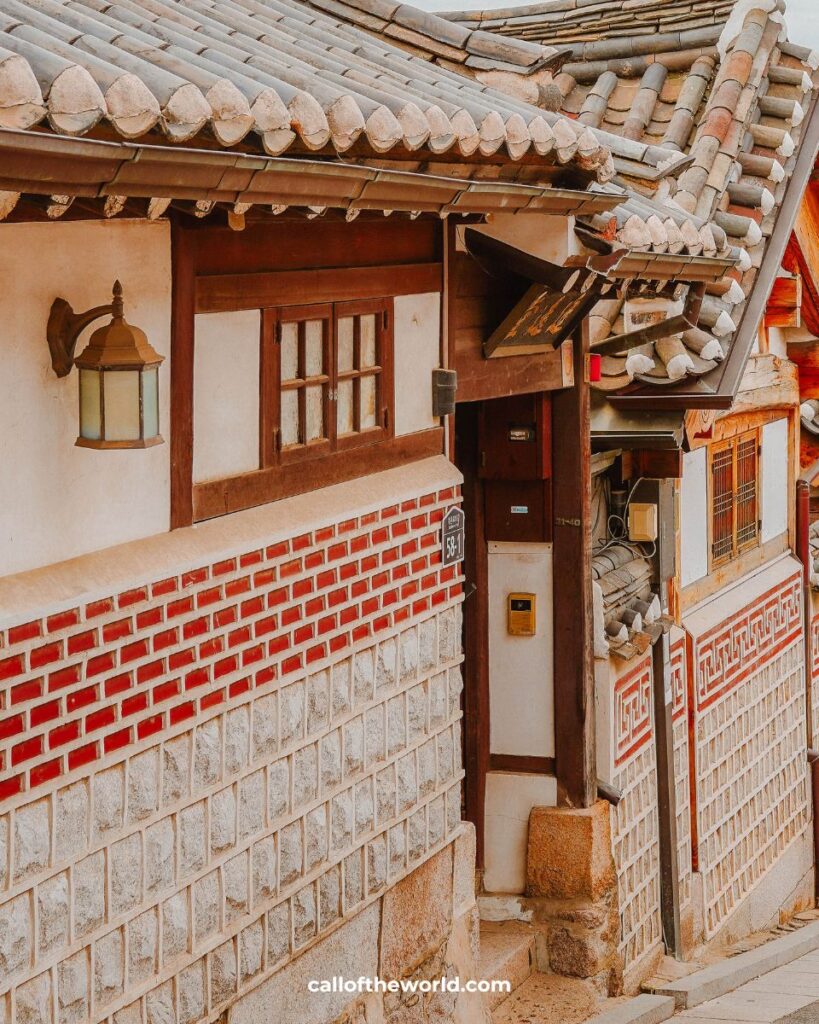

2. How to Get to Bukchon Hanok Village
Getting to Bukchon Hanok Village is easy, especially if you’re staying in central Seoul. The village is located in the Jongno district, between Gyeongbokgung Palace and Changdeokgung Palace, making it an easy stop during a day of historical sightseeing. You can easily visit all these places on one single tour.
By Metro (Recommended)
- Nearest station: Anguk Station (Line 3, Orange Line)
- Exit: Take Exit 2 and walk straight for about 5–10 minutes. You’ll begin to see signs directing you to the main Bukchon viewing spots.
- The walk is uphill in places, so wear comfortable shoes — especially if you’re planning to explore the smaller alleyways.
By Taxi or Private Transfer
Taxis are affordable in Seoul, and most drivers will recognise “Bukchon Hanok Village” or “북촌한옥마을.” If you’re travelling as a group or want a door-to-door experience, a private transfer can be a convenient choice.
💡 Travel tip: For ease, consider booking an airport or hotel transfer through Welcome Pickups — you’ll avoid language barriers and arrive stress-free.
By Tour
If you prefer a guided experience, several walking tours include Bukchon Hanok Village, often paired with palace visits or hanbok rentals. This is a great way to get historical context and access to hidden spots you might miss on your own.
🌟 Struggling with the noise of busy cities?
If you’re tired of constant background noise while exploring the hustle and bustle of city life, **Loop Earplugs** are a game-changer. These stylish, discreet earplugs help reduce noise without blocking out important sounds. Ideal for people who need a bit of peace amidst the chaos!
- Reduce unwanted noise while still being aware of your surroundings.
- Comfortable and reusable.
- Perfect for travellers who enjoy peace in busy urban environments.

3. Best Things to Do in Bukchon Hanok Village
There’s more to Bukchon than just admiring the rooftops. This peaceful pocket of Seoul allows you to slow down and explore.
– Wander the Hanok Alleyways (and Find the Famous Photo Spots)
The best way to explore Bukchon is simply to get lost. Some of the most scenic spots are marked on local maps — like Gahoe-dong 11-gil and 31-gil — but don’t be afraid to veer off course. It’s all part of the charm.
📸 Photography tip: Early morning is best for photos (and fewer crowds). The golden hour just before sunset also lights the rooftops beautifully.
Already planning your Seoul itinerary? Check out my full guide to How to Spend 3 Days in Seoul South Korea: Epic Itinerary.
– Visit the Bukchon Traditional Culture Centre
Located near the main alleyway on Gahoe-dong, the Bukchon Traditional Culture Centre is a great place to start your visit. It offers free maps of the area, cultural exhibits, and occasionally traditional craft demonstrations or performances.
Opening hours: Usually 9am–6pm (closed Mondays)
Pro tip: Staff here speak some English and can recommend quieter walking routes or events happening that day.
– Rent a Hanbok for the Full Experience
Want to immerse yourself in Korean tradition? Or simply take dreamy photos among the hanoks? Renting a hanbok (traditional Korean clothing) is a popular and respectful way to do it. Many rental shops are located near Anguk Station, and you can choose from hundreds of styles, including modernised or historical looks.
Hanbok tip: Wearing a hanbok also gets you free entry to nearby palaces like Gyeongbokgung and Changdeokgung. You can even opt for a combined Hanbok Photoshoot and History Tour at Gyeongbokgung Palace.
– Try a Cultural Workshop (Calligraphy, Ceramics, or Tea Ceremony)
Several artisan workshops in Bukchon open their doors to visitors for cultural experiences. From Korean calligraphy to Traditional Brewery Visits, these activities are a chance to slow down and connect with Korean heritage hands-on.

4. Where to Eat Near Bukchon Hanok Village
After a morning of wandering Bukchon’s quiet alleyways, you’ll definitely want to refuel — ideally somewhere with atmosphere, good food, and a bit of history. Luckily, the surrounding area is full of spots that deliver on all three.
– Café Onion Anguk
One of the most photogenic cafés in Seoul, Café Onion Anguk blends industrial minimalism with a restored hanok structure. Their signature Pandoro pastry, dusted with powdered sugar like a mini snow mountain, is worth the hype.
☕ Best for: Coffee lovers, design fans, and Instagrammable moments
📍 5-minute walk from Bukchon
– Tosokchon Samgyetang
Just a short distance from Gyeongbokgung Palace, Tosokchon is famous for its samgyetang — a nourishing ginseng chicken soup traditionally eaten to beat summer heat. The restaurant is inside a sprawling hanok complex, making the meal feel like a journey into Korea’s culinary past.
🍲 Best for: Traditional Korean food in a historic setting
💡 Try to visit just before or after peak lunch hours to avoid long queues.
– Cha-teul (차틀)
This tranquil tea house near Changdeokgung offers an escape from the buzz, with hanok-style interiors and a refined menu of traditional Korean teas and sweets. Perfect for a quiet break — especially in autumn when the garden glows with colour.
🍵 Best for: Tea and a mindful moment
– Bukchon Son Mandu (북촌손만두)
A more casual option, this spot serves some of the best mandu (Korean dumplings) in the area. Quick, filling, and affordable — ideal if you’re visiting on a budget or short on time.
🥟 Best for: A quick bite before more exploring
💸 Budget-friendly local favourite

5. When to Visit Bukchon Hanok Village
Bukchon is beautiful year-round, but your experience can vary depending on the season — and even the time of day.
Spring (March–May)
Spring is one of the best times to visit. The cherry blossoms and blooming magnolias around the hanoks create a soft, romantic atmosphere. It’s also one of the most popular seasons, so arrive early to avoid crowds.
What to wear: A light jacket and layers — Seoul can still be chilly in March.
Summer (June–August)
Expect hot, humid days with bursts of monsoon rain in July. The hanoks provide some shade, but exploring can feel intense. If you visit in summer, go early in the morning or later in the afternoon.
Bonus: Many visitors rent hanboks in summer — it’s common to see streets full of colour and movement.
Autumn (September–November)
Autumn is arguably the best time to visit. Clear skies, crisp air, and vibrant autumn foliage make Bukchon especially photogenic. The nearby palace gardens and trees around the village explode in shades of gold, red, and orange.
Best month: October. Warm days, cool nights, and fewer crowds than spring.
Winter (December–February)
Snowfall is rare but magical when it happens — imagine snow-dusted rooftops and steaming cups of tea in a hanok café. Fewer tourists visit at this time, making it ideal for those seeking a quiet, reflective walk through history.
Wear: A heavy coat, gloves, and thermal layers. The hanok village sits on a hill, and the wind can be pretty icy!
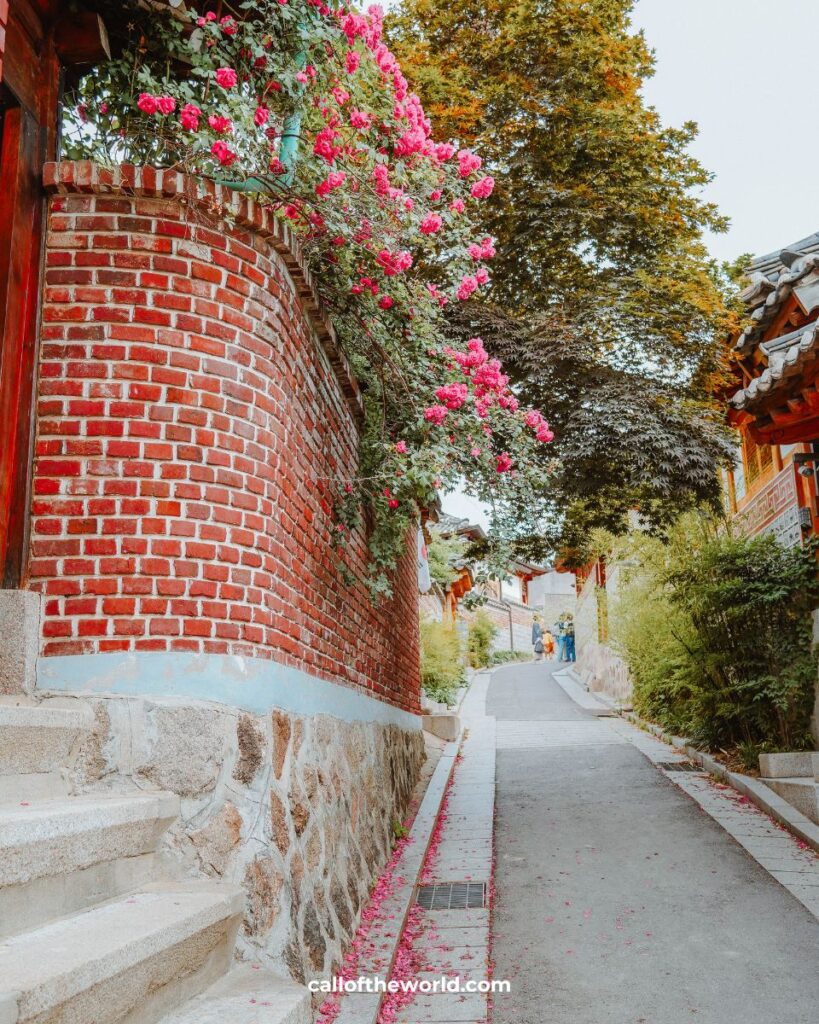
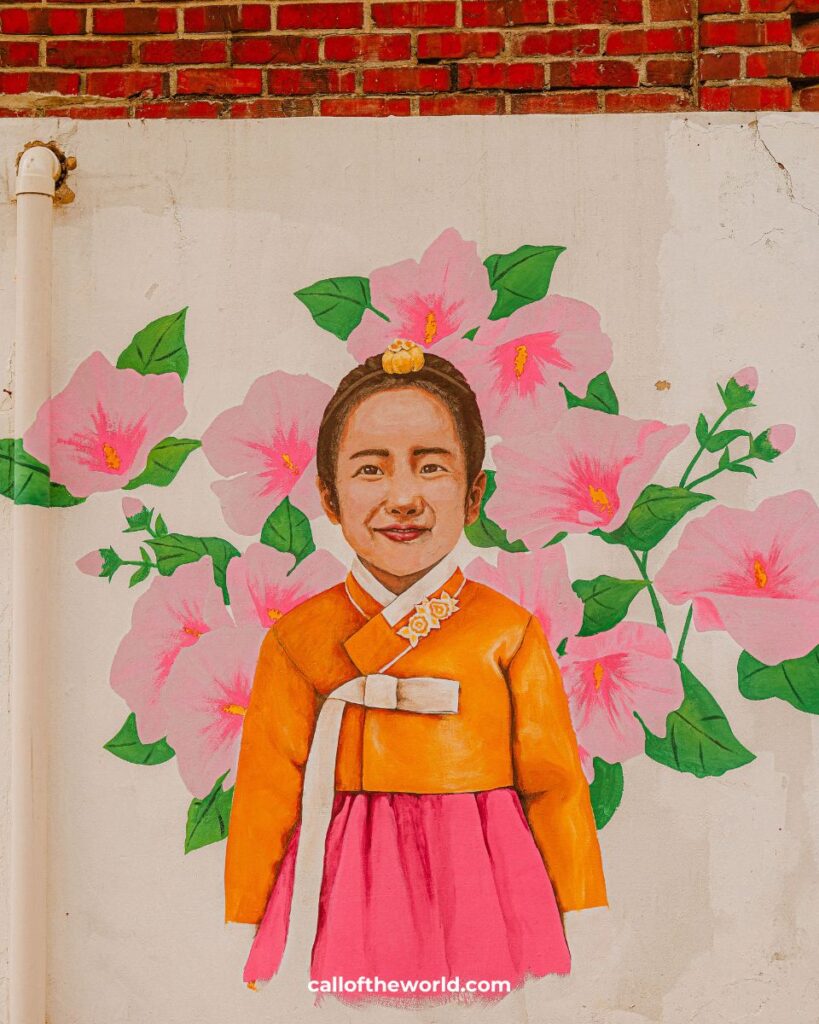

6. Travel Tips & Visiting Bukchon Hanok Village Respectfully
Bukchon isn’t just a tourist site — it’s a real, lived-in neighbourhood. As you wander the lanes and take in the architecture, it’s essential to explore with care and respect. Here’s how to do it right:
- Be Quiet and Courteous: Many hanoks are still private homes. Keep voices low, especially in the early morning or evening. Avoid peering into windows or stepping into gated courtyards unless signage indicates it’s open to the public.
- Stick to the Marked Paths: Bukchon has designated tourist walking routes to help protect the privacy of residents. You’ll often see signs indicating where photos are discouraged — follow these respectfully.
- Don’t Block Narrow Alleys: It’s tempting to pause for the perfect shot, but try not to block footpaths, steps, or small alleyways, especially when groups are around. Be mindful of locals coming and going.
- Pack Light & Wear Good Shoes: Bukchon’s lanes are hilly and cobbled. Comfortable walking shoes are a must. If you’re carrying gear or a hanbok rental, a small backpack is far easier than lugging a tote.
📱 Use a Local eSIM or Pocket Wi-Fi
Having mobile data helps when navigating Bukchon’s winding streets. Use an eSIM (I can recommend Airalo, Holafly, or Saily) for easy connection.
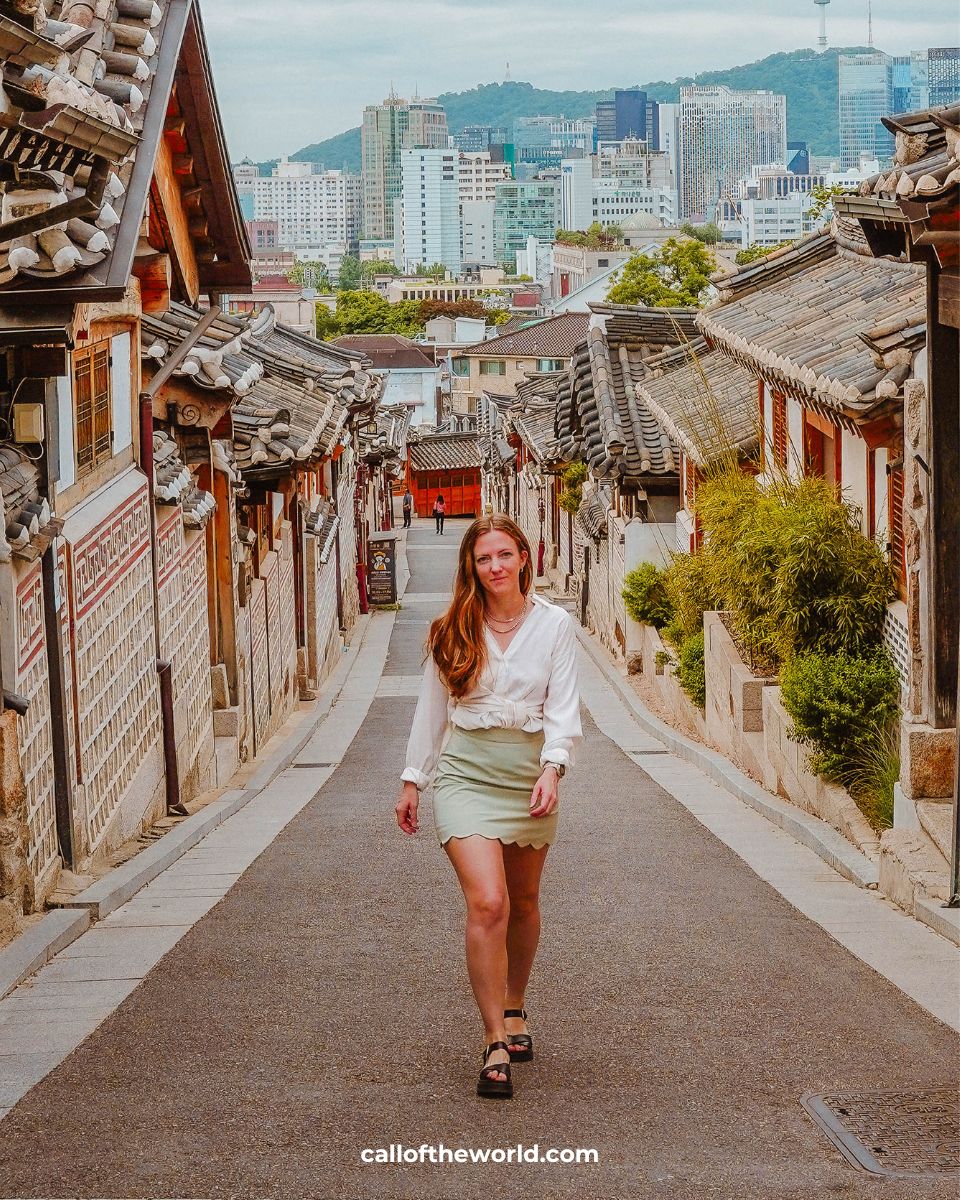
7. Final Thoughts: Is Bukchon Hanok Village Worth Visiting?
Absolutely. Whether you’re into photography, culture, design, or just a more chill side of Seoul, Bukchon Hanok Village is a must-visit. It’s not a theme park — it’s a rare glimpse of Korea’s living history, quietly existing just a few streets away from the modern capital.
Take your time. Be present. And don’t forget to look up — those rooftops really are something else.
Plan your trip
→ 3 Days in Seoul Itinerary (Perfect for First-Timers)
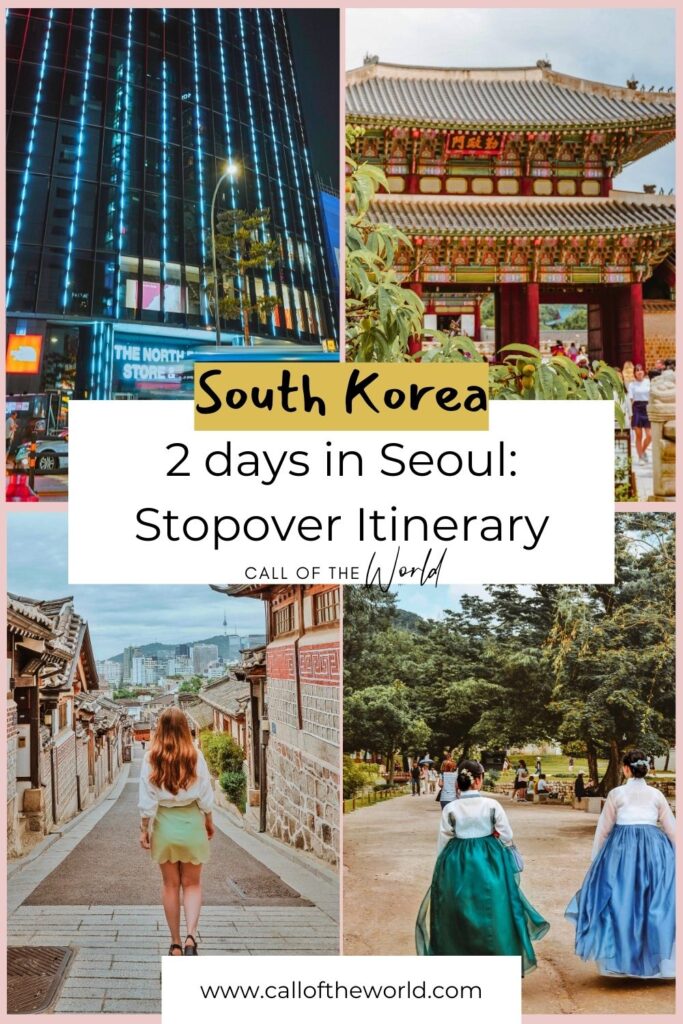
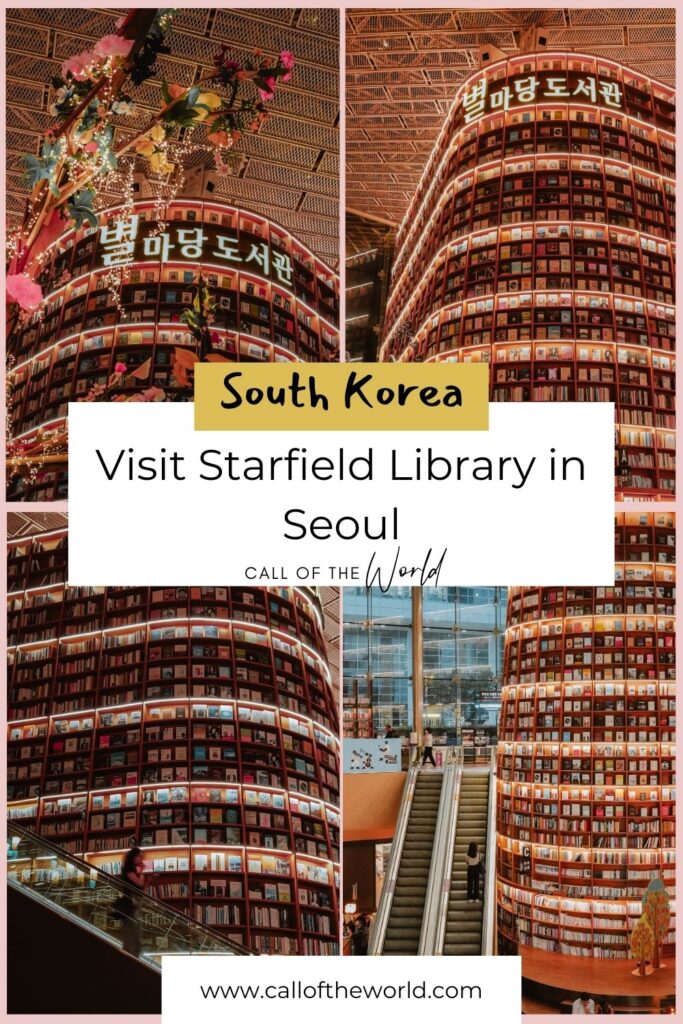
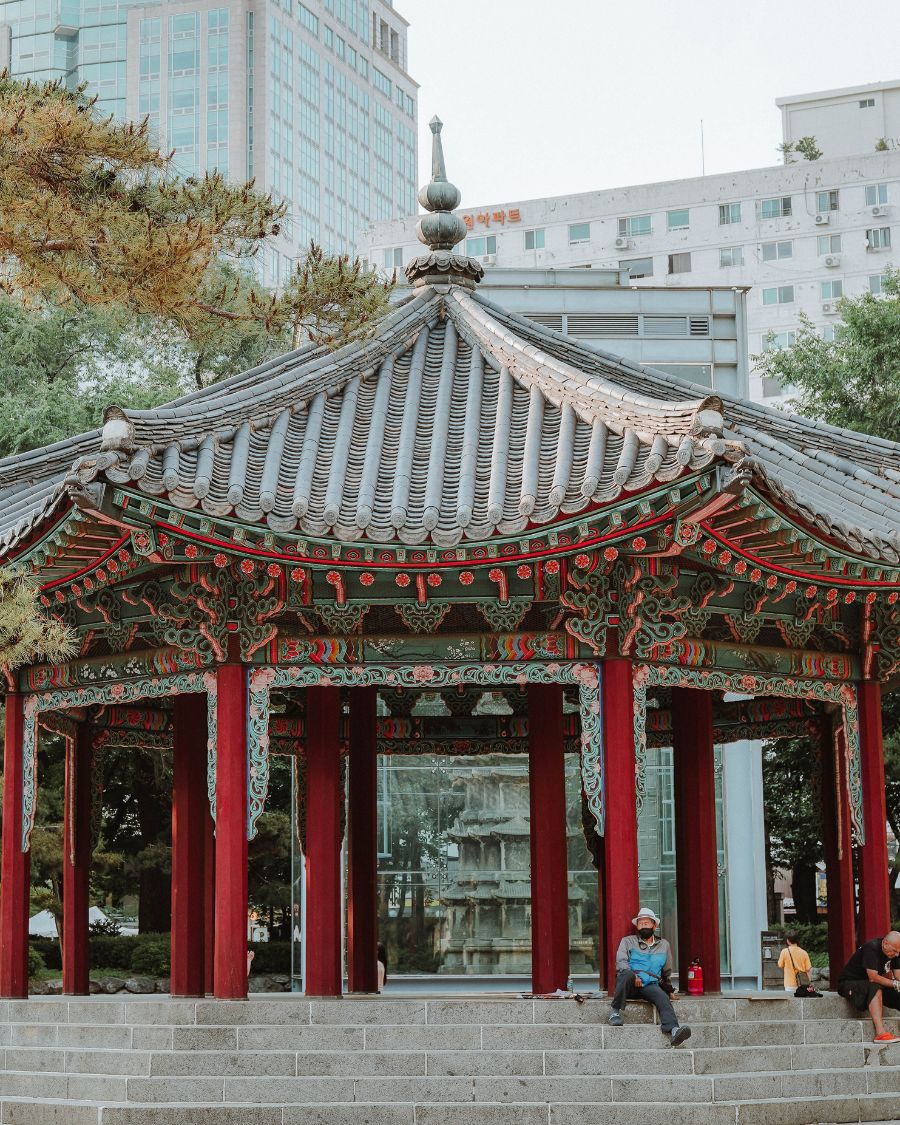
Planning your next trip? These are my ride-or-die travel tools — handpicked, tested, and essential. The smart stuff I actually use to book fast, travel safer, and stress less. I don’t gatekeep when it comes to travel!
Travel Insurance
- SafetyWingNomad-friendly, low-cost, and claim-friendly. Built for long-term travellers.
- Heymondo (5% off)Great app. Fast claims. Reader discount included.
Flights
- SkyscannerThe only tool I trust to find the cheapest flights in seconds.
Money & Banking
- WiseNo hidden fees, epic exchange rates — perfect for multi-country trips.
Accommodation
- Booking.comFree cancellation, last-minute deals — ideal for the flexible traveller.
Transport
- 12GoBuses, trains, ferries across Asia — easy, fast, and reliable.
- Welcome PickupsPrivate airport pickups with friendly local drivers. Book in advance and relax.
Tours & Tickets
- ViatorSkip the queue, book activities last-minute, cancel for free.
- G AdventuresSmall-group tours, ethical operators, great for solo travel.
eSIMs & Data
- AiraloDigital SIM cards you can activate instantly. No roaming bills, ever.
- Holafly (5% off with code “CALLOFTHEWORLD”)Unlimited data. 100+ countries. Set it up in 5 minutes.
- Saily (5% off with code “SPECIAL5”)Affordable eSIMs that just work, especially in Southeast Asia.
Stay Secure
- NordVPNBrowse safely on public Wi-Fi, access content globally, and stay private.
- ExpressVPNFast, reliable, and works in countries with heavy censorship.
✈️ Pro tip: Set these up before your trip so you can hit the ground running. Travel smarter, not harder.
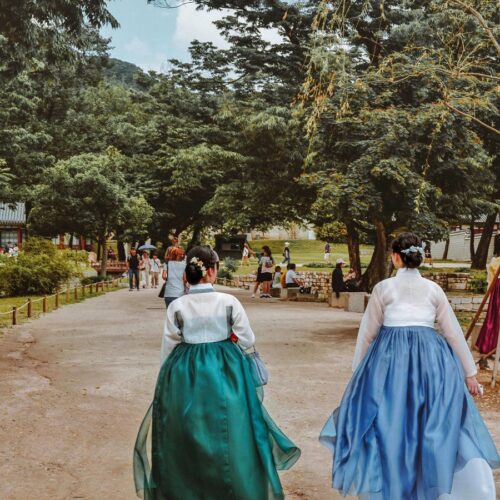



Leave a Reply